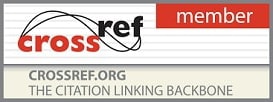- Printed Journal
- Indexed Journal
- Refereed Journal
- Peer Reviewed Journal

Journal of Pharmacognosy and Phytochemistry
Vol. 14, Issue 6 (2025)
Marker-based standardization of Diatrin tablet ensuring safety and efficacy
Sonali Shankar Bansode, Manish S Kondawar and Sachin G Lokapure
The growing reliance on herbal formulations as safer alternatives to allopathic medicine necessitates the development of standardized products to ensure consistency, safety, and efficacy. This study focuses on the standardization and comparative evaluation of a marketed polyherbal antidiabetic formulation, Diatrin tablet, and its laboratory-prepared counterpart. The formulation comprises herbal constituents such as Syzygium cumini, Gymnema sylvestre, Curcuma longa, and others known for their antidiabetic and therapeutic properties. Granules were prepared using the wet granulation method, followed by evaluation for physicochemical parameters including bulk density, moisture content,angle of repose, Carr’s index, and Hausner’s ratio. The final tablets were analyzed through FTIR to assess drug-excipient compatibility, and standard quality control tests were performed, including weight variation, friability, hardness, and disintegration time. Both formulations were subjected to organoleptic, microscopic, and phytochemical evaluations. High-performance thin-layer chromatography (HPTLC) confirmed the presence of quercetin, a flavonoid marker, in both samples with Rf values ~0.9. Quantitative estimation of total flavonoid content using aluminum chloride colorimetric assay revealed 237.85 mg/g and 250.93 mg/g in marketed and laboratory-prepared tablets, respectively. The study demonstrates the suitability and reliability of developing a standardized herbal antidiabetic formulation that meets established pharmacognostic and pharmaceutical standards.
Pages: 107-116 | 105 Views 32 Downloads









